Supply Chain Management
Organizations can respond quickly to changing demand, supply, and market conditions using ISF’s Supply Chain Management (SCM) & Manufacturing. Connect your supply chain seamlessly to build a robust network and process that can keep up with change.
Request a Free Consultation
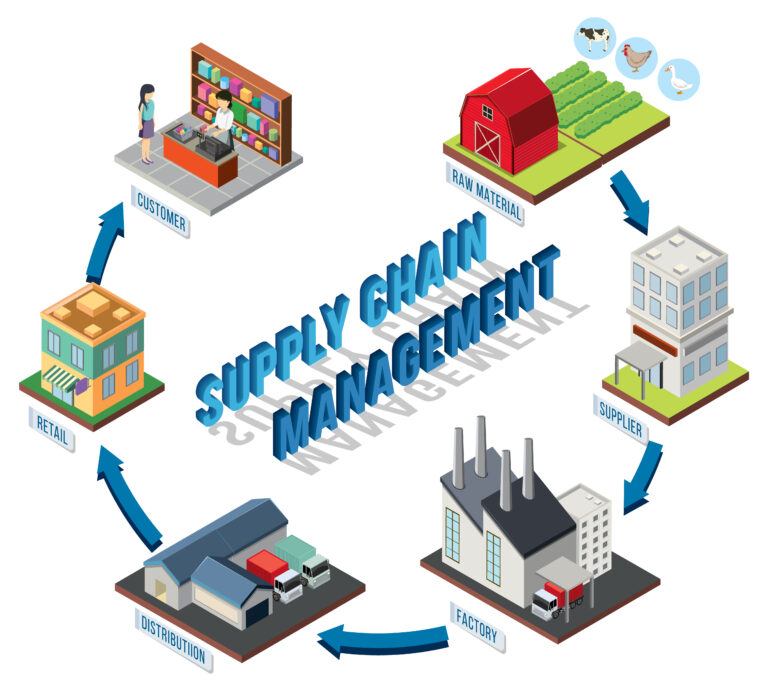
What do we mean by Supply Chain Management?
Supply chain management refers to the oversight of the movement of goods and services, which covers all procedures that turn raw materials into finished products. It entails actively simplifying a company’s supply-side processes in order to optimise customer value and achieve a competitive edge in the market.
Key Points
- Supply chain management (SCM) is the centralised control of the flow of goods and services that covers all activities that turn raw materials into finished products.
- Companies can minimise costs and deliver items to customers faster and more effectively by optimising the supply chain.
- Good supply chain management keeps firms out of the news and away from costly recalls and litigation.
- The five most important aspects of SCM are defining a strategy, sourcing raw materials, production, distribution, and returns.
- A supply chain manager is in charge of regulating and cutting expenses as well as avoiding supply shortages.
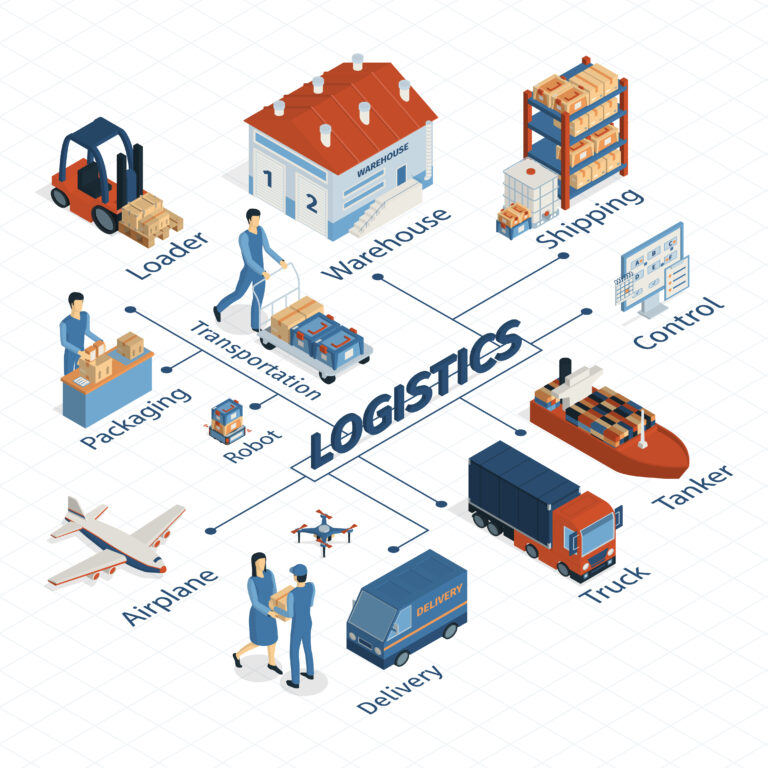
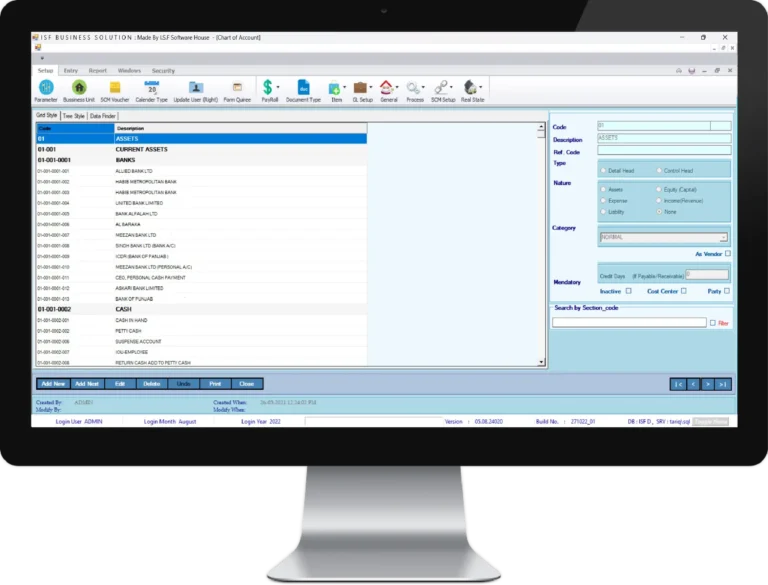
How does Supply Chain Management (SCM) Works
Supply chain management (SCM) refers to providers’ efforts to create and operate supply networks that are as efficient and cost-effective as feasible. Supply chains encompass everything from production to product development to the information systems required to drive these endeavours.
Typically, SCM aims to centrally regulate or link the production, shipment, and distribution of a product. Companies may decrease costs and deliver items to customers faster by optimising the supply chain. This is accomplished through tightening control over internal inventories, internal manufacturing, distribution, sales, and vendor stocks.
What exactly is a Supply Chain Management Example
Supply chain management is the process of coordinating the many operations required to create and distribute goods and services to a company’s clients. Supply chain operations might involve designing, farming, manufacturing, packing, and transportation.


Why you need Supply Chain Management?
Supply chain management is significant since it may aid in the achievement of numerous corporate goals. Controlling manufacturing processes, for example, may enhance product quality while lowering the danger of recalls and litigation and assisting in the development of a strong consumer brand. Simultaneously, controls over shipping methods can improve customer service by preventing costly shortages or periods of inventory overflow. Overall, supply chain management gives various options for organisations to enhance their profit margins, and it is especially crucial for companies with big and multinational operations.
What Constitutes Supply Chain Management's Five Components?
Supply chain management consists of five major components: planning, acquiring raw materials, production, distribution, and returns. The planning phase relates to defining an overall strategy for the supply chain, whilst the other four sections specialise in the critical requirements for carrying out that plan. Companies must have skills in all five aspects to ensure an effective supply chain and prevent costly bottlenecks.
SF will monitor and track the following transactions with the adoption of the Supply Chain Management System:
- Chart of Account
- Customer Information
- Vendor Information
- Bank Information
- Tax Setup
- Sales ( Sales Quotation, Sales Order, Delivery Challan, Sales Invoice, Sales Return )
- Reports
- Purchase ( Purchase Requisition, Purchase Order, Good Receipt Note, Purchase Invoice, Purchase Return )
- Inventory ( Material Receipt Note, Material Issue Note, Adjustment IN, Adjustment OUT, Stock Transfer Note)
- Payment / Receipt (Debit Note, Credit Note, Account Receipt, Account Payment, Expense)
Features of ISF Supply Chain Management
The core component of every inventory system is the Supply Chain Management. It needs to be flexible, scalable, and dynamic. Companies can adapt quickly to changing business needs thanks to the flexibility, insights, and control provided by ISF Supply Chain System.
Automation
Delete all handwritten journal entries. The time and effort needed for account reconciliation, closures, and audits are decreased by adding custom GL effect lines to transactions across one or more accounting books. Before the journal is issued, automated journal-entry approval procedures validate criteria including threshold amounts and approval restrictions. ISF GL automates P&L allocations, amortisation and depreciation schedules, and other common computations.

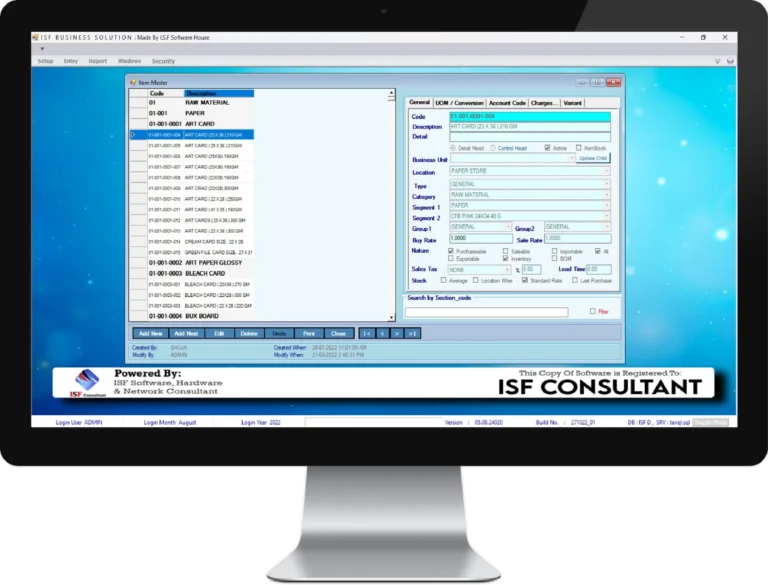
Accounts Chart
A simpler chart of accounts framework that arranges financial and statistical data for easier reporting is a welcome replacement for complicated tracking codes.
Segments
In addition to the typical subsidiary, class, department, and location segments, you may also define an infinite number of custom GL segments, including profit centre, fund, programme, and product line segments. By assuring adherence to double-entry accounting standards and balancing data across all segment combinations, you may increase accuracy and save time.
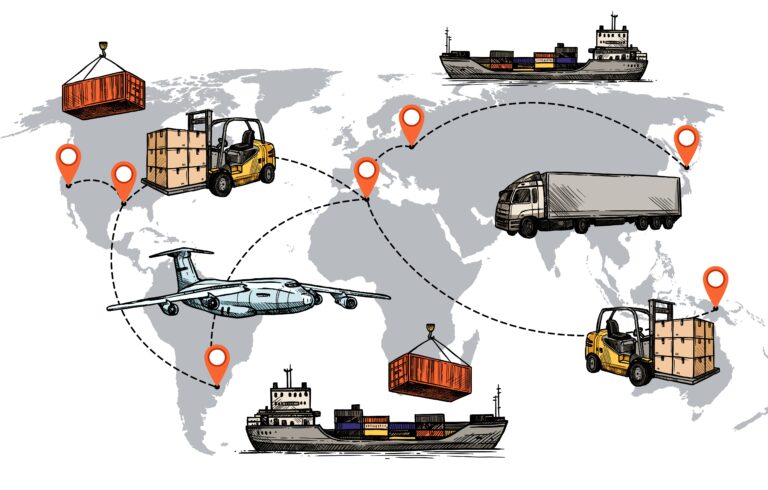
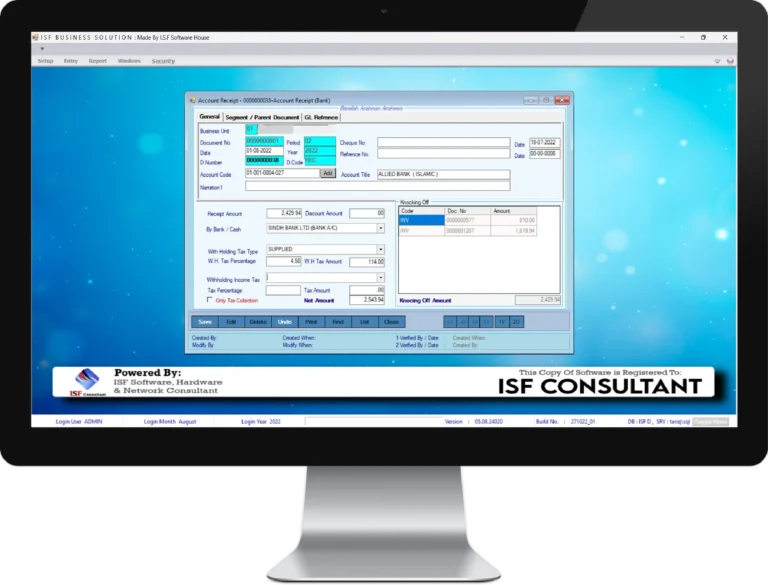
Budget Monitoring
Gain the ability to monitor income and spending in relation to predetermined budgets made using ISF’s General Ledger software in Pakistan Planning and Budgeting or imported as.csv files in real-time.
Assembly
The production process and cost management have been simplified; simply begin a project, pick raw materials and expenses, and end the operation to obtain full cost data.
- Create Templates
- Job Start / Job End
- Calculation of Raw Materials
- Allocation of Expenses
- Updates to Inventory
- Job Costing Sheet in Depth
- Job Costing
- Price per Finished Unit
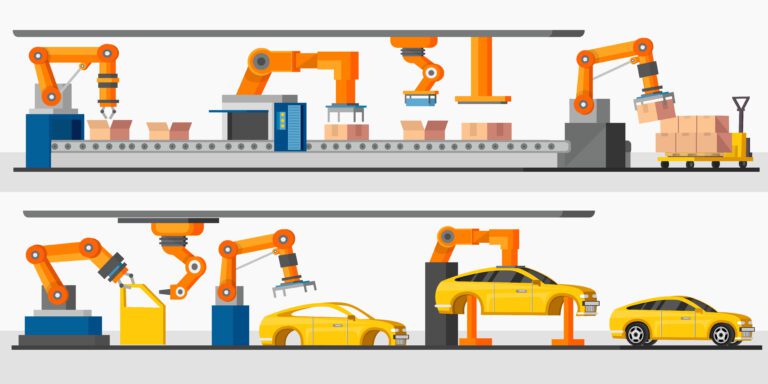

Inventory Accounting
Fully automated inventory module for cost of sales and stock management. Each product has many units of measurement, and there are multiple warehouses holding inventories.
- Current Products
- Non-Stock Item
- Stock Calculation Automatic
- Sales Tax Rate for Link Filers and Non-Filers
- Schedule 3, non-Schedule 3, or Exempt Products for Sales Tax
- Numerous Units of Measure
- Location-Based Inventory
- Add Inventory to Landed Cost Accumulation
- Size of Packaging for Simple Delivery Management
- Bin Location ID for records
Sales
Create Sales Invoices quickly and easily. Simple invoice templates that you may customize with your company logo. Unpaid balances and recovery are always available.
- Invoices for Sales
- Monthly Billing in Bulk
- Make Quotations
- Take Sales Orders
- Accept / approve / Reject / Invoice orders
- Discounts / Trade Promotions / Retail Margin
- Printing Customized Sales Invoices
- Invoice-Level Sales Recovery
- Refunds and advances to customers
- Balances Owed
- Customer Management for Filers and Non-Filers
- Customer Accounts Online
- Rates for Customer-Specific Products
- Invoices with the Batch and Expiry Dates / IMEI / Serial Number

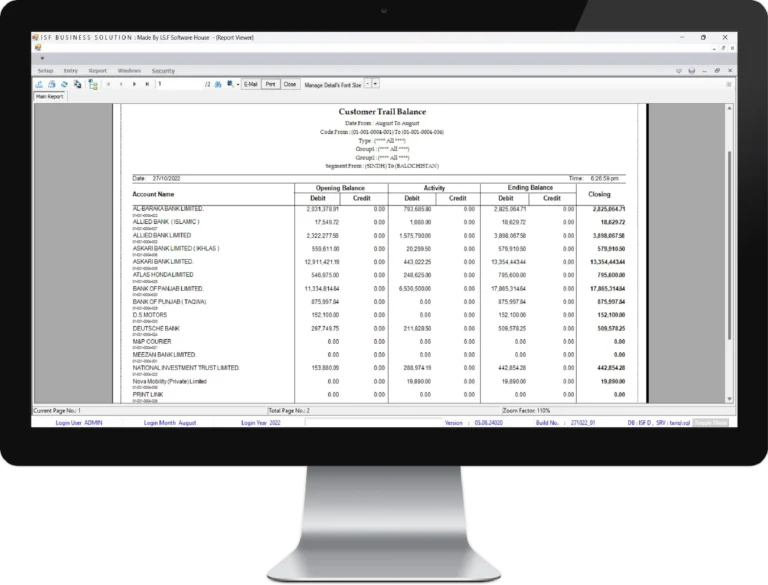
Reports
Advance Reports Financial Reports Module provides comprehensive insight into every facet of your firm. Management Reports are constantly updated.
- Recovery of Sales and Debtors
- Purchases
- Remittances & Creditors
- Banks & Cash
- Items & Stock
- Withholding Sales Tax Income Tax
- Income Tax Projects in Advance
- Reports on Assembly Management (Trail Balances, Profit & Loss Accounts, Balance Sheet, Nominal Activities and many more)
Voucher Posting
You’re manually posting a fixed asset acquisition and expect to see all of the G/L Account information in the ensuing Journal Entry Voucher, including the G/L Account generated by the Individual Material and the Offsetting G/L Account you’ve chosen. However, just the second is shown.
The system design explains why the Journal Entry Voucher does not correspond to the G/L Account generated by the Individual Material
Examine the journal entries created by the journal entry voucher posting to confirm the whole posting information. The journal entries may be found in the Related Journal Entries section of the voucher.
